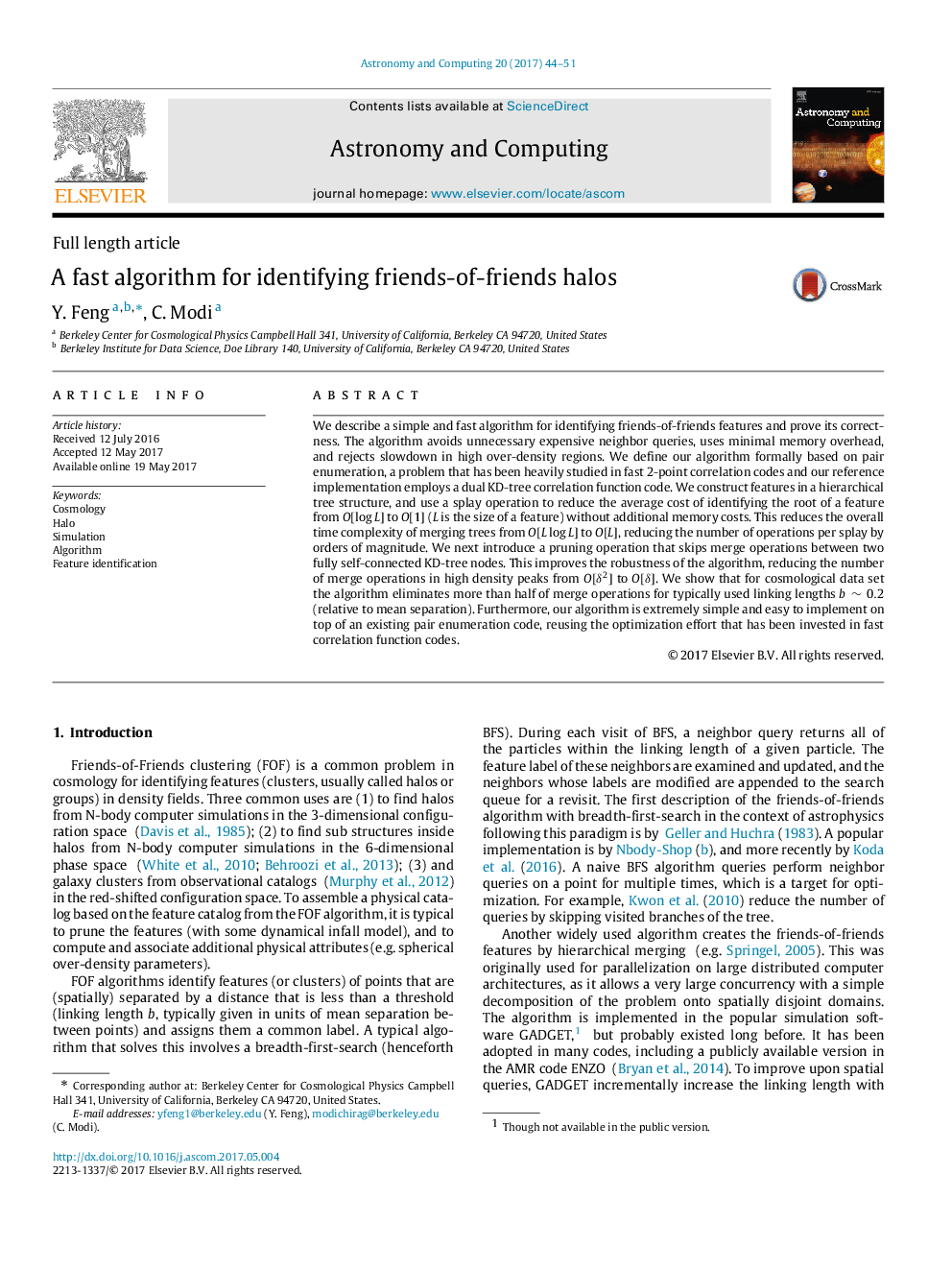ترجمه فارسی عنوان مقاله
الگوریتم سریع برای شناسایی دوستان هالو دوستان
عنوان انگلیسی
A fast algorithm for identifying friends-of-friends halos
| کد مقاله | سال انتشار | تعداد صفحات مقاله انگلیسی |
|---|---|---|
| 150365 | 2017 | 8 صفحه PDF |
منبع

Publisher : Elsevier - Science Direct (الزویر - ساینس دایرکت)
Journal : Astronomy and Computing, Volume 20, July 2017, Pages 44-51
ترجمه کلمات کلیدی
کیهان شناسی، هاله، شبیه سازی، الگوریتم، شناسایی ویژگی،
کلمات کلیدی انگلیسی
Cosmology; Halo; Simulation; Algorithm; Feature identification;

